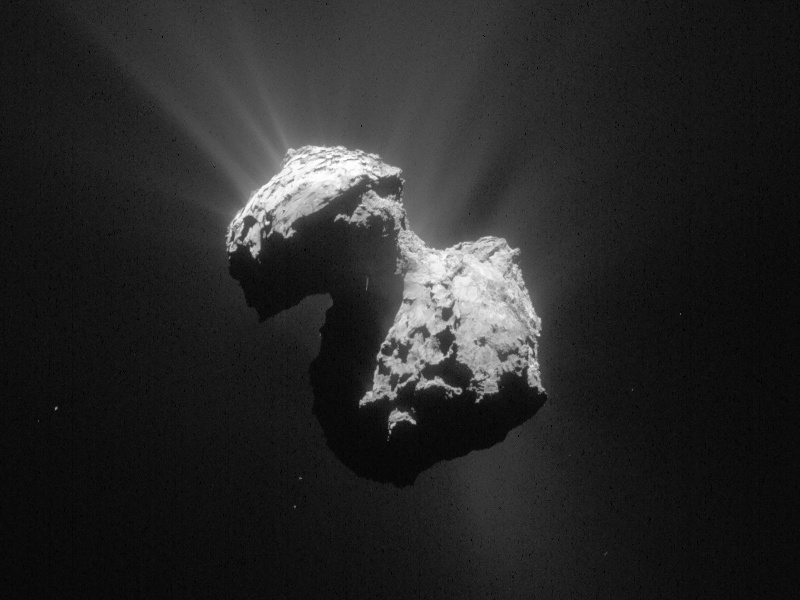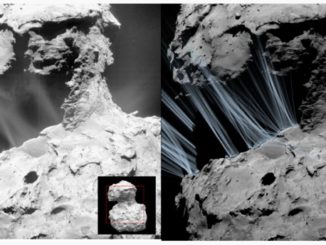
If the assumptions of the present “standard” model of the origin of our solar system are correct, a quiet initial phase was followed by a period in which large bodies initiated higher velocities and more violent collisions. In a first study, the scientists calculated how much energy would be needed to destroy a structure like Chury in a collision. As it turned out, Chury has a weak point; the connection between the two parts — the neck between the head and the body. “We have found that this structure can be destroyed easily, even with low energy collisions,” Martin Jutzi summarises. Willy Benz compares the neck of the comet with the stem of a glass: “A dishwasher has to clean very gently, so that the stem of the glass does not break,” says the astrophysicist. Obviously, the solar system did not handle this aspect as carefully.
The new study shows that comets like Chury experienced a significant number of collisions over time, the energy of which would have been sufficient to destroy a bi-lobe structure. Therefore, the shape is not primordial, but has developed through collisions over billions of years. “Chury’s present shape is the result of the last major impact which probably occurred within the last billion years,” says Martin Jutzi. The duck-shaped Chury is, therefore, much younger than previously thought. The only alternative would be that the current standard model of the early evolution of the solar system is not correct and there were fewer small objects than previously thought. In this case, there would not have been as many collisions and Chury would have had the chance to keep its primordial shape. “At the moment, we do think though that Chury’s shape is the result of many collisions, and that the standard model doesn’t need to be revised,” says Jutzi.
New shape, same content
In the second paper, Jutzi and Benz investigate exactly how Chury’s current form could have resulted from a collision. In their computer models, they had small objects with a diameter of 200 to 400 metres crashing into a roughly five-kilometre, rotating body in the form of a rugby ball. The impact speed was in the range of 200 to 300 metres per second, which clearly exceeds the escape velocity for objects of this size (about 1 metre per second). However, the energy involved is still far below that of a catastrophic impact in which a large part of the body is pulverised. As a result, the target was torn in two parts, which, due to the effects of their mutual gravitational force, later merged into a structure with two parts — a structure like Chury.
Does the result of this research contradict previous knowledge that comets consist of primordial material at least as old as our solar system? “No,” the researchers say. Their computer simulations show that the relatively small impact energy does not heat or compress the comet globally. The body is still porous and the volatile material which was contained in it since the beginning is retained. In connection with Chury, these properties could be measured convincingly with the Rosetta spacecraft. “So far, it has been assumed that comets are original building blocks — similar to Lego,” says Willy Benz. “Our work shows that the Lego blocks no longer have their original form, but the plastic that they consist of is still the same as in the beginning.”



